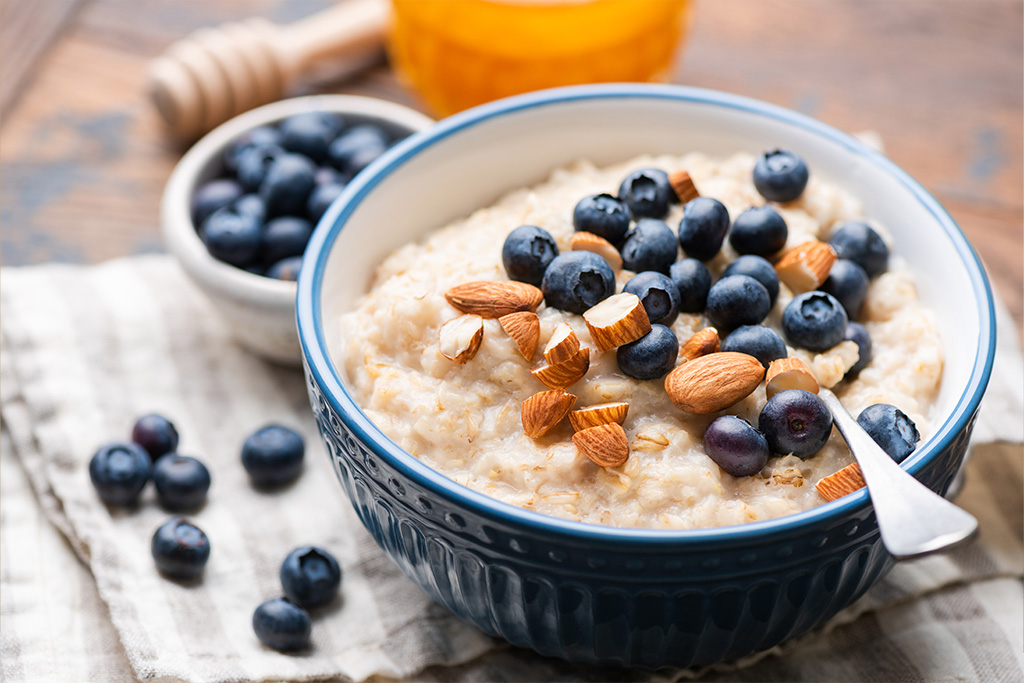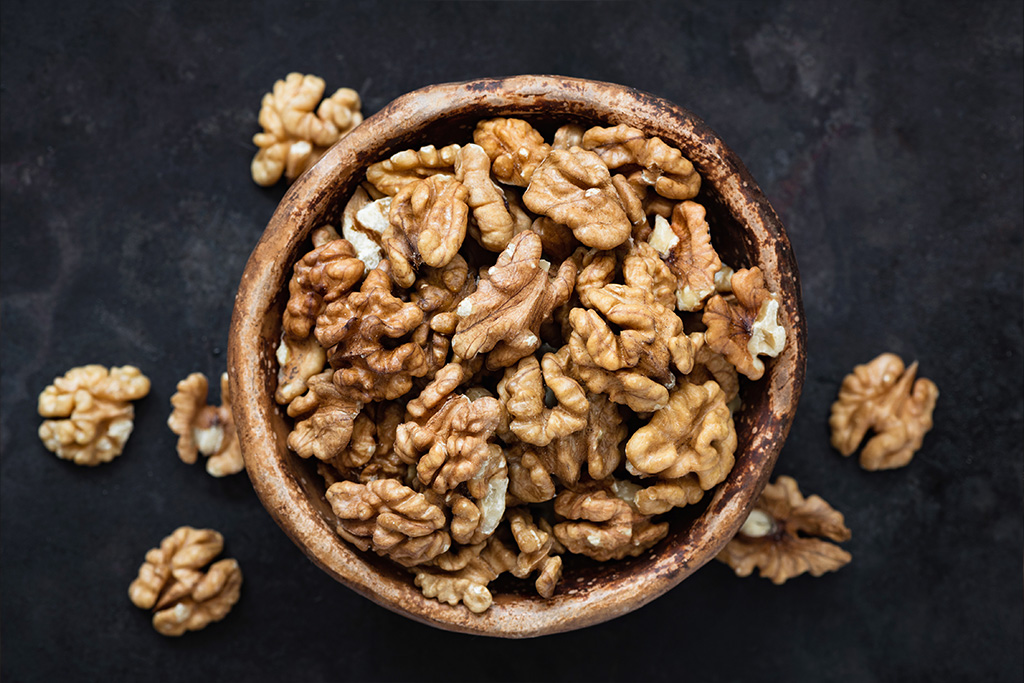The New Year gives you the opportunity to set goals, grow in different areas of your life, and embrace a healthier lifestyle and mindset. This issue of Start Healthy is here to help you refresh with tips for creating achievable resolutions, a guide to buying and caring for sheets, a look at the benefits of macronutrients, and a list of health products that aren’t necessarily healthy.
People all over the world will set New Year’s resolutions, but they often fall by the wayside as the year goes on. Make your 2023 resolutions stick by following the enclosed guide’s tips on how to set and keep your goals.
Maybe you’ve never given much thought to the sheets on your bed, but the quality of sheets, fabric choice, and regular upkeep can all impact your sleep. This issue takes a closer look at the different types of bedsheets and how you can properly care for them.
Macronutrients—carbohydrates, proteins, fats, fiber, and water—are an important part of developing a well-balanced diet. To help you better understand the role of macros, be sure to read the enclosed article on their various health benefits and how they can help you reach your nutrition goals.
While you may want to believe that certain health products are, well, healthy, they can actually do more harm than good. The informative article inside lists five products to avoid and offers healthier alternatives to try on your next trip to your local grocery store.
Here’s wishing you a happy and healthy New Year! As always, it’s a pleasure to send you this magazine.
Every year, people all over the country set New Year’s resolutions. From going to the gym five days a week to cutting back on spending to journaling for thirty minutes a day, there’s no limit to the goals that you can make for yourself.
However, the challenge comes with actually sticking to those goals. You may find that you have lofty aspirations for the year, but when you make resolutions that are too far beyond your normal habits, they are harder to keep. To increase the likelihood of sticking to New Year’s resolutions, one thing you can do is establish realistic expectations.

While the practice of making New Year’s resolutions is thought to date back to the ancient Babylonians, today’s resolutions often aren’t quite on Babylonian levels. Instead of vowing to the gods, you tend to now make promises to yourself. Resolutions allow you to look back on the previous year and examine what you liked and disliked about it. They offer a chance to not repeat the same mistakes and to adjust habits to help you reach a larger goal since the New Year is a blank slate with new opportunities.
But if this practice is one that’s been continued for thousands of years, the question becomes why the vows are often not kept. In fact, a 2020 PLOS ONE study found that only 55 percent of participants successfully completed their New Year’s resolutions. Research shows that first making and working toward a resolution triggers a dopamine release, a natural reward system within your body. But, after a while, the dopamine release drops off, and you no longer feel as rewarded for working toward the goal. So if you’re setting goals that are too grand or not clearly defined, it’s then harder to keep striving to meet them when you don’t have that same chemical response. To help you achieve them, there are a few practical steps you can take.

Be specific with your goals
When setting a resolution, your first step should be to clearly define what it is that you want to accomplish. If your goal is to eat healthier in the New Year, how are you going to do that? Do you want to eat more fresh produce, cut back on fast food, or cook three meals a day? Your goals need to be specific so that you can understand exactly what you’re setting out to do.
You can also define how long you want to work toward your resolutions. While it might be traditional to say you want to do something for the full year, that’s not the only option available. You can set smaller resolutions for every month, three months, or six months. These are your personal goals, so you can make them for whatever and however long you want. After you’ve clearly defined what you want to do and for what length, be sure to write them down somewhere (perhaps in a journal, as detailed below) so that you can reference back to them throughout the year.
Remember the motivations behind your goals
When setting your resolutions, think about what it is that you want to do and why you want to do it. There’s generally a reason we set goals, a motivation that comes from wanting to grow in one area or another. So consider what that reason is. When you fully understand the underlying motivation, you can better understand yourself and why you want to accomplish these specific resolutions.

Create a path toward your goals
It’s important that you make your goals realistic enough for you to accomplish them this year. A good way of doing this is to consider the small steps that will get you to each larger goal. For example, if you want to make new friends this year, start by going to a local coffee shop, bookstore, or farmers market. These places allow you to interact with a variety of people, which can, in turn, broaden your social skills and help you meet even more people. These small steps create a path toward your goal and allow you to celebrate the small victories along the way. It may be cliché, but resolutions are often less about the final destination and more about the journey to get there.
Keep track of your progress
Achieving resolutions does require a certain level of determination, so tracking and measuring your progress is a good way to keep yourself motivated since you know exactly where you’re going and far you have left to get there. You can track your progress by keeping a journal throughout the year, where you’ll write down all you have accomplished and what you still need to do. Much like celebrating the small victories along the way, this allows you to rejoice in the smaller wins throughout the year.
Change or adapt your goals
Though you’ll jot down your goals and define what it is that you want to accomplish, they’re not necessarily set in stone. It is OK to adapt or modify your resolutions throughout the year. If you find that you’re not keeping to a goal, consider what’s not working for you and what’s inhibiting you from meeting it, and adapt accordingly. This gives you the flexibility to learn from yourself and your habits, and, ultimately, it will help you to not repeat what you’ve done in the past.
New Year’s resolutions can help us to grow in many areas of our lives, so it’s important that you start the year with realistic goals that you can accomplish. It’s a clear way of setting yourself up for success.
You might not often think about the sheets on your bed, but they can improve how well you sleep while also protecting your mattress. Bedsheets come in a wider variety of options than ever, so use this guide to pick the perfect sheets for you.

Bedsheets are often made of cotton, which is easy to care for and is known for its durability, softness, and affordability. But in recent years, other material options have become available, including ones woven from bamboo, eucalyptus, microfiber, or a mix of fabrics. Here are some of the materials most often used in sheets.

The way a sheet is woven can affect its quality and feel. For instance, percale sheets are made of fibers weaved in a simple crisscross pattern, so they are cool, crisp, and lightweight but can wrinkle easily. In contrast, sateen sheets are made from a different weave technique that produces warmer, heavier, and satin-like sheets, while flannel sheets are loosely woven for coziness and warmth.

Size is very important when shopping for sheets, so it’s crucial to know the size of your mattress, such as a queen or a king, to get the best fit. If you have a pillowtop mattress or an extra-foam topper, you may need a fitted sheet with deep or extra-deep pockets. Regular sheets are generally up to fourteen inches deep, deep-pocket sheets are at least fifteen inches, and extra-deep-pocket sheets are sixteen or more. Use a measuring tape or yardstick to measure the thickness of your mattress; it’s a good idea to buy sheets slightly deeper than you need so they can stretch to stay on properly.
Most experts recommend washing the sheets on your bed at least weekly. It’s best to check your sheets’ care labels for washing and drying instructions, but both cotton and microfiber sheets can normally be washed in a regular warm-water cycle in your washing machine and dried in your dryer. Avoid using hot water or high heat on microfiber sheets because high temperatures can ruin them. Meanwhile, higher-end sheets made from eucalyptus, bamboo, or silk should be laundered separately in cold water with a mild detergent in a gentle cycle and then air- or line-dried or tumbled in a delicate dryer setting.

If you want eco-friendly sheets, look for ones made of all-natural cotton, bamboo, or eucalyptus that have a label such as the Standard 100 by OEKO-TEX, which indicates that they have been tested for safety and deemed to be free of unhealthy or toxic substances.
With careful research and shopping, you can find sheets that will keep you warm and toasty (or cool and cozy) and help you sleep better.
If you’ve ever been on a weight-loss journey, you might have come across messaging telling you to eat smaller portions, lessen your intake of sugar and fat, and increase the number of fruits and vegetables in your diet. While all these choices can contribute to weight loss, they are only a surface-level approach to improving your nutrition.
Every meal you eat is made up of macronutrients—the nutrients your body needs to function. Many people are aware of the most common macros: carbohydrates, proteins, and fats. However, the USDA actually recognizes five types of macronutrients as essential for proper nutrition: carbohydrates, proteins, fats, fiber, and water.
Ideally, you should be consuming meals with a balance of all these macronutrients. The percentage and amount of each macronutrient you need per meal depends on factors including your age, weight, and wellness goals, but there are guidelines you can follow to help you get started.
First, you need to understand what macronutrients do for your body and why they are so important when planning your meals.

Carbohydrates
When you think of carbohydrates, you may conjure images of garlic bread, spaghetti, and french fries. You might even associate carbs with negative eating habits. The truth is, carbs are not the enemy; in fact, you need them to sustain your energy. Furthermore, most people need to consume them in larger quantities than they might think.
There are two different types of carbohydrates: simple and complex. Simple carbs, also known as simple sugars, are often found in less nutrient-dense foods like candy and can contribute to a sharp spike in blood sugar levels. Complex carbs, also known as starches, can be found in grains such as rice and quinoa as well as bread and pasta.
Both types of carbohydrates are broken down into sugar that your body uses for energy. Complex carbs, however, contribute to more sustained energy and can keep you feeling full for longer, making them the better choice overall.

Proteins
Protein has gotten a lot of attention in the wellness world recently, and for good reason. In many ways, it’s the foundation for what physically makes you you. It helps form your hair, skin, nails, muscles, bones, and tissues, and it is vitally important for anyone who’s looking to build or maintain muscle mass.
Chicken, beef, fish, and other animal proteins are the most protein-rich foods available. However, you don’t necessarily need to consume animal products to get the recommended daily amount of protein in your diet. The Harvard T.H. Chan School of Public Health also recommends consuming a high volume of protein-packed plant items like lentils, beans, nuts, seeds, and whole grains, as well as higher-protein veggies like brussels sprouts, asparagus, and artichokes.

Fats
Fat is possibly the most misunderstood macronutrient because of its connotations with weight gain and unhealthy foods. But just like carbohydrates and protein, your body needs fat to sustain essential processes such as nutrient absorption and hormone production.
There are four different types of fats, and it’s important to know the distinction between them. Trans fats, for example, occur naturally in animal products but in qualities too low to impact cholesterol levels. However, artificial trans fats, also known as partially hydrogenated oils on nutrition labels, can contribute to health problems like heart disease.
Prioritize monounsaturated and polyunsaturated fats in your diet; these can be found in olive oil, nuts like almonds and walnuts, seeds, and fish. Salmon is a particularly good source of healthy fats thanks to its high levels of omega-3 fatty acids, which your body needs but cannot make on its own.

Fiber
Many people struggle to eat enough fiber, which can contribute to gastrointestinal problems. Fiber intake also plays an important role in weight management since it can help you feel satiated longer. Because fiber is found in plants and whole grains, the best way to ensure you’re eating enough of it is to consume more whole foods. Soluble fiber, which is found in foods like oats, nuts, and seeds, helps maintain your blood sugar and cholesterol levels. Insoluble fiber aids in digestion and can be obtained by eating whole grains like quinoa and rice, leafy greens, and fruits with edible skin such as apples.
Consuming enough fiber is important not only for proper nutrition and digestion but also for disease prevention. Studies have shown that fiber intake can help lower your risk of developing diabetes and heart disease, and its anti-inflammatory properties can reduce the risk of a variety of other diseases attributed to inflammation.

Water
Last but certainly not least, water is a vital macronutrient because it’s what makes up 50 to 70 percent of your body. How much water you need to drink is dependent on your age, weight, activity level, and environment, but most people should aim to drink between four and six cups per day. Consuming enough water is crucial for regulating your body temperature, digestion, and absorption of essential nutrients.

Now that you know what macronutrients are and the functions they serve in your body, you can explore the percentage of macronutrients you need to consume at each meal.
As mentioned above, the proper ratio of carbs, protein, fat, fiber, and water varies from person to person. However, the US Department of Health and Human Services recommends the following guidelines for the average adult consuming between 2,000–3,000 calories per day:
With these guidelines in mind, you’ll want to make sure you include plenty of carbs, protein, fat, and fiber in every meal, which can be achieved by balancing your plate or bowl with foods in the ratios above. An example of a healthy meal with these recommended macros could be a grain bowl made up of a base of whole grains like quinoa, farro, or rice (carbs/protein/fiber), topped with roasted vegetables (carbs/fiber), chicken or tofu (protein/fat), and a dressing of olive oil, vinegar, and seasonings (fat).
This example is just one of countless ways to create meals you enjoy that meet the recommended ratio of macros. Experiment with ingredients and foods you like, and you’ll be well on your way to meeting your nutrition goals.
For more info, visit dietaryguidelines.gov
It’s no surprise that food labels can be misleading. However, the degree to which packaged health foods are designed to fool you can be jaw-dropping.
When you enjoy a healthy meal, you make good use of the nutrients like vitamin D and fiber in every bite. That’s the easy part; the difficult part is making good dietary choices to supply these life-sustaining nutrients. The following foods are marketed to seem healthier for your body than they actually are. In fact, these five offenders just might be junk food in disguise.

To be clear, meat alternatives can taste like meat and may even leave you with a satisfying “full” feeling. But to do so, many of these vegetarian products are loaded with extra sodium, saturated fats, or artificial preservatives.
Overall, these products are better for the environment than they are for you. However, there are healthier ways to reduce your meat consumption.
Try instead: meat substitutes that don’t look like meat. As Medical News Today suggests, “Peas and beans, nuts, seeds, seitan, textured vegetable protein, tofu, tempeh, edamame, eggs, milk, cheese, yogurt, and seafood are all high-protein food sources … that also provide calcium, iron, vitamin D and some vitamin B¹².”

Your morning bowl of cereal may advertise its health benefits, including daily recommended doses of fiber, vitamins, and minerals, right on its box. Unfortunately, cereal manufacturers may not be so eager to advertise the other additives that can be packed into these breakfast staples, like surprisingly high quantities of sugar, sodium, and simple carbohydrates, easily digestible sugar molecules that only provide short-term energy.
Worse, good nutrients from grains and nuts are often removed during the cereal-making process. These products are often low in fiber and are stuffed with synthetic ingredients that are unhealthy, especially for the children they directly advertise to. Such family breakfast-table staples may be comforting or even nostalgic, but they should be enjoyed in moderation.
Try instead: hot cereals like oatmeal and breakfast porridge, which contain simpler, more natural ingredients and provide ample healthy nutrients. They may not be as sweet, but you can add a natural sweetener like honey, which has additional health benefits.

Vitamin D is an essential nutrient responsible for promoting bone and muscle health. When you get this nutrient from dairy products, fatty fish, and eggs, your body naturally processes vitamin D and puts it to good use. So the more vitamins the better, right? Eager to address their own health concerns, many people shop for supplements like vitamin D pills and powders, which claim to offer a daily boost of this nutrient.
But don’t mistake vitamin D supplements for actual vitamin D. The supplements market, which includes over-the-counter vitamins available at your local drugstore or grocery store, isn’t regulated like medications are. That means the Food and Drug Administration doesn’t test their ingredients or determine if they work—or even if they’re safe at all.
As Gerald E. Harmon, MD, former president of the American Medical Association, says, “The dietary supplement marketplace is an uncertain place for consumers—so little transparency, so much confusion.” So while vitamin D is a popular supplement, you may be wasting money on unregulated products that don’t actually provide the health benefits they advertise.
Try instead: talking to your doctor about your vitamin needs. Only take vitamin supplements if your doctor recommends them, and only trust supplements that they prescribe directly.

On the surface, granola seems like the perfect health food. Its tiny bunches of rolled oats, nuts, and indeterminate grains appear to come straight from the wheat field and are blessed with sweeteners like a light honey glaze.
Granola manufacturers want you to think their products are natural—and for many people, the ruse works. Imagery of barns and wheatgrass on the packaging seems just convincing enough to make you feel healthier when you eat granola. However, some granola bars are classified as “ultra-processed,” or so laden with preservatives, unhealthy fats, sugars, and other dangers that they’re directly tied to declining health.
Try instead: hot cereals such as oatmeal, which are made with simple ingredients and are considered wonderful breakfast foods. If you’re a fan of granola as a midday snack, switch to less-processed, high-fiber options like apples, grapes, and a handful of raw or lightly seasoned walnuts.

Companies that provide foods designed to help you lose weight and live a healthier lifestyle wouldn’t possibly lie to you, right? Unfortunately, packaged meals from the healthy section of the freezer aisle may not be as nutritious (or slimming) as they seem.
According to Insider, “[P]repackaged meals tend to have about 8% more calories on average than listed on the label—even ones specifically advertised for weight loss, such as Lean Cuisine or Weight Watchers.” Research has shown that processed foods—any processed foods—can lead to chronic health problems and even weight gain.
Try instead: easy-to-make, affordable meals that you can cook yourself. Shop for simple ingredients like lean meats, complex carbohydrates like whole-wheat pasta, and fresh produce. You can also cut costs with canned or frozen produce without additives. Cooking your own meals with whole ingredients allows you to adjust your portions and monitor your use of salt and sweeteners. When you cook meals yourself, you’re in control of the process and what you put in and what you don’t.
Overall, be sure to eye store-bought “health products” with suspicion before committing to them. Many are designed to be purchased, not necessarily to deliver on their promises. For best results, improve your intake of fruits, nonstarchy vegetables, whole grains, and legumes, which will provide a dependable health boost without the drawbacks or the deceit.







